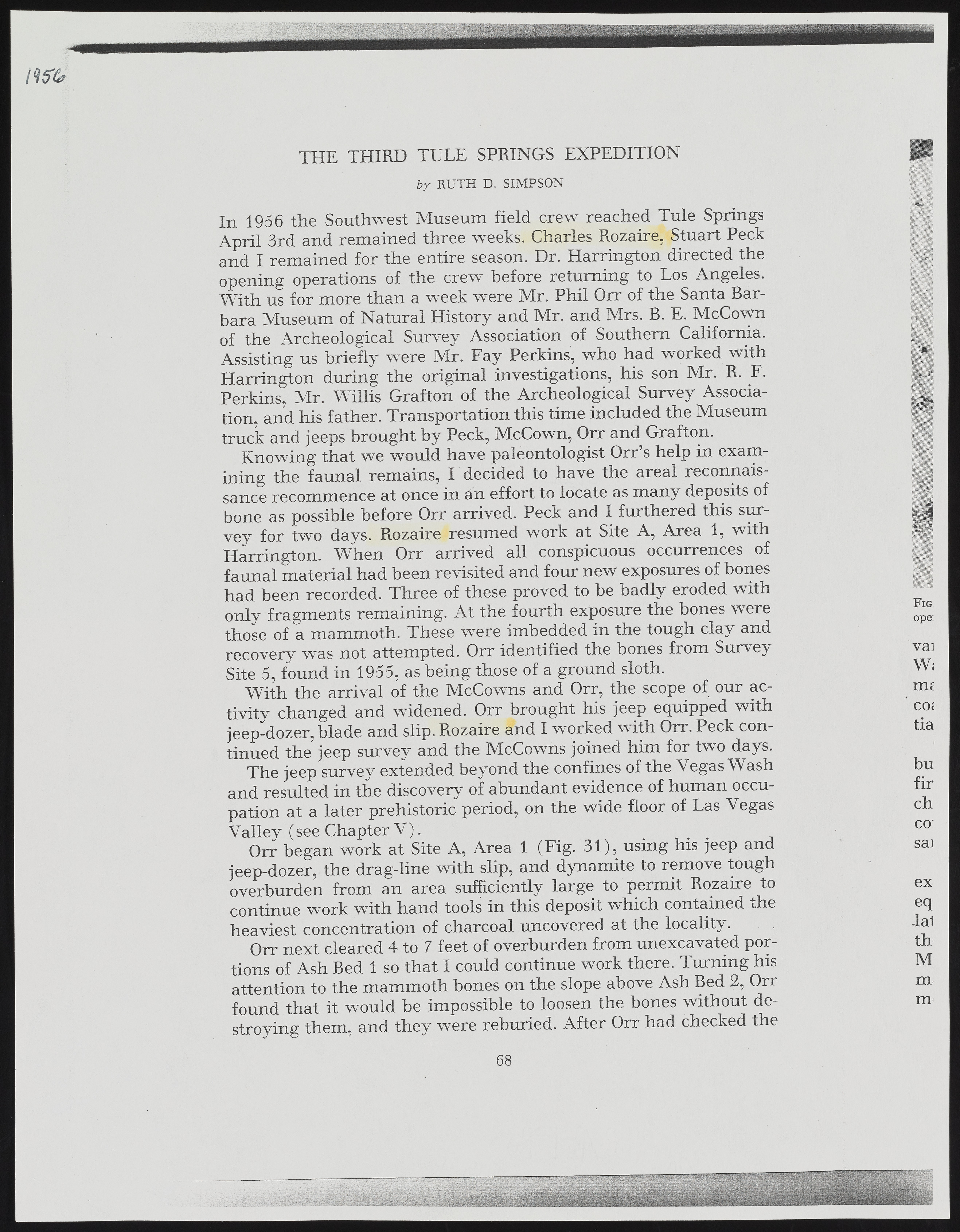Copyright & Fair-use Agreement
UNLV Special Collections provides copies of materials to facilitate private study, scholarship, or research. Material not in the public domain may be used according to fair use of copyrighted materials as defined by copyright law. Please cite us.
Please note that UNLV may not own the copyright to these materials and cannot provide permission to publish or distribute materials when UNLV is not the copyright holder. The user is solely responsible for determining the copyright status of materials and obtaining permission to use material from the copyright holder and for determining whether any permissions relating to any other rights are necessary for the intended use, and for obtaining all required permissions beyond that allowed by fair use.
Read more about our reproduction and use policy.
I agree.Information
Digital ID
Permalink
Details
Member of
More Info
Rights
Digital Provenance
Publisher
Transcription
/<?^& THE THIRD TULE SPRINGS EXPEDITION by RUTH D. SIMPSON In 1956 the Southwest Museum field crew reached Tule Springs April 3rd and rem ained three weeks. Charles Rozaire, Stuart Peck and I rem ained for the entire season. Dr. H am ngton directed the opening operations of the crew before returning to Los Angeles. W ith us for more than a week were Mr. Phil Orr of the Santa Barbara Museum of N atural History and Mr. and Mrs. B. E. McCown of the Archeological Survey Association of Southern California. Assisting us briefly were ]\fr. Fay Perkins, who had worked w ith H arrington during the original investigations, his son Mr. R. F. Perkins, Mr. Willis Grafton of the Archeological Survey Association, and his father. Transportation this time included the Museum truck and jeeps brought by Peck, McCown, Orr and Grafton. Knowing that we would have paleontologist Orr s help in examining the faunal remains, I decided to have the areal reconnaissance recommence at once in dn effort to locate as m any deposits of bone as possible before Orr arrived. Peck and I furthered this survey for two days. Rozaire resumed work at Site A, Area 1, w ith Harrington. W hen Orr arrived all conspicuous occurrences of faunal m aterial had been revisited and four new exposures of bones had been recorded. Three of these proved to be badly eroded with only fragments remaining. At the fourth exposure the bones were those of a mammoth. These were imbedded in the tough clay and recoverv was not attempted. Orr identified the bones from Survey Site 5, found in 1955, as being those of a ground sloth. W ith the arrival of the McCowns and Orr, the scope of our activity changed and widened. Orr brought his jeep equipped with jeep-dozer, blade and slip. Rozaire and I worked w ith Orr. Peck continued the jeep survey and the McCowns joined him for two days. The jeep survey extended beyond the confines of the Vegas Wash and resulted in the discovery of abundant evidence of hum an occupation at a later prehistoric period, on the wide floor of Las Vegas Valley (see Chapter V ). Orr began work at Site A, Area 1 (Fig. 31), using his jeep and jeep-dozer, the drag-line w ith slip, and dynamite to remove tough overburden from an area sufficiently large to perm it Rozaire to continue work w ith hand tools in this deposit which contained the heaviest concentration of charcoal uncovered at the locality. Orr next cleared 4 to 7 feet of overburden from unexcavated por tions of Ash Bed 1 so that I could continue work there. Turning his attention to the m am m oth bones on the slope above Ash Bed 2, Orr found that it would be impossible to loosen the bones without destroying them , and they were reburied. After Orr had checked the Fig ope: va] Wj m< co< tia fli bu fir ch co sai ex eq Ja1 thMm m 68

